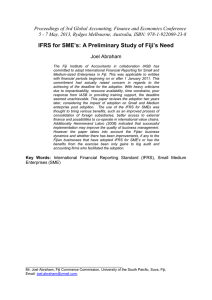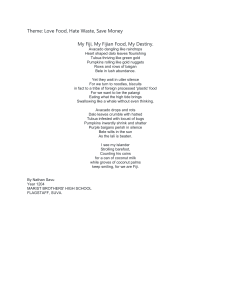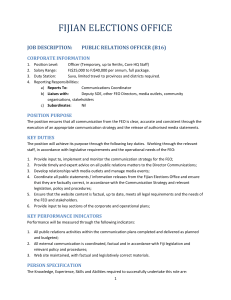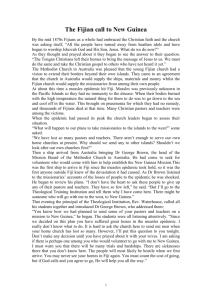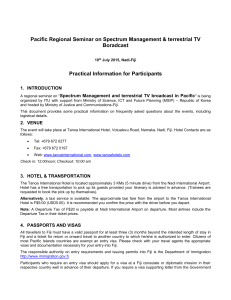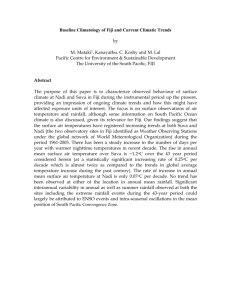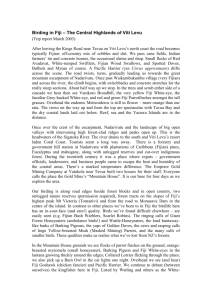abstractoct2010griffin - Anthropological Society of Western
advertisement
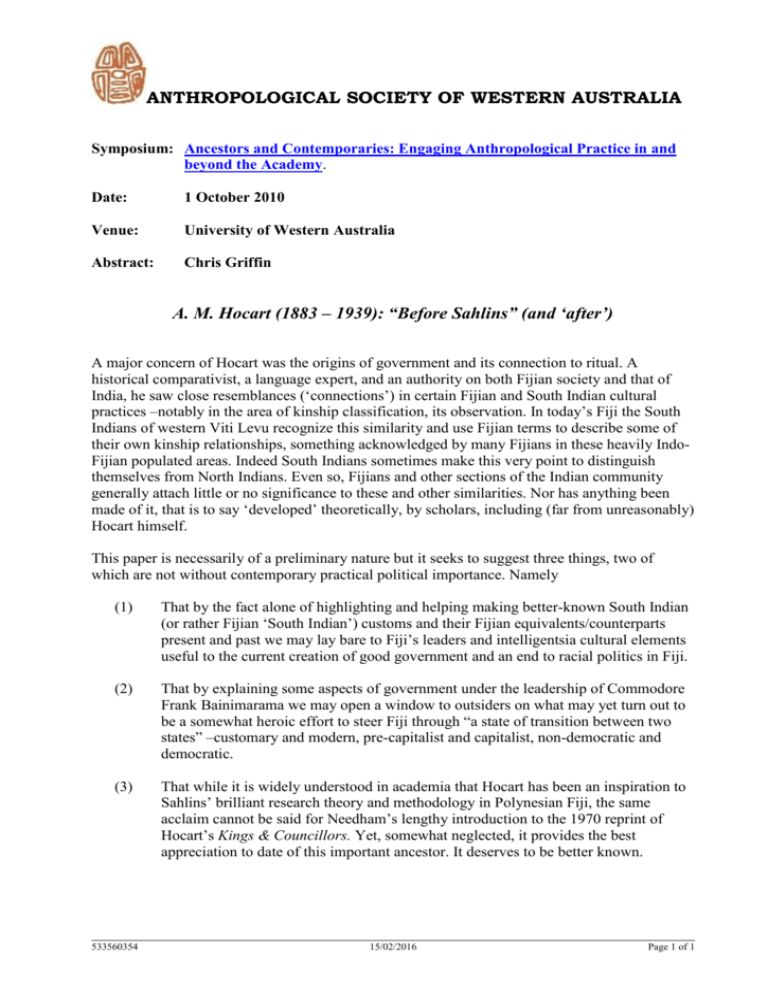
ANTHROPOLOGICAL SOCIETY OF WESTERN AUSTRALIA Symposium: Ancestors and Contemporaries: Engaging Anthropological Practice in and beyond the Academy. Date: 1 October 2010 Venue: University of Western Australia Abstract: Chris Griffin A. M. Hocart (1883 – 1939): “Before Sahlins” (and ‘after’) A major concern of Hocart was the origins of government and its connection to ritual. A historical comparativist, a language expert, and an authority on both Fijian society and that of India, he saw close resemblances (‘connections’) in certain Fijian and South Indian cultural practices –notably in the area of kinship classification, its observation. In today’s Fiji the South Indians of western Viti Levu recognize this similarity and use Fijian terms to describe some of their own kinship relationships, something acknowledged by many Fijians in these heavily IndoFijian populated areas. Indeed South Indians sometimes make this very point to distinguish themselves from North Indians. Even so, Fijians and other sections of the Indian community generally attach little or no significance to these and other similarities. Nor has anything been made of it, that is to say ‘developed’ theoretically, by scholars, including (far from unreasonably) Hocart himself. This paper is necessarily of a preliminary nature but it seeks to suggest three things, two of which are not without contemporary practical political importance. Namely (1) That by the fact alone of highlighting and helping making better-known South Indian (or rather Fijian ‘South Indian’) customs and their Fijian equivalents/counterparts present and past we may lay bare to Fiji’s leaders and intelligentsia cultural elements useful to the current creation of good government and an end to racial politics in Fiji. (2) That by explaining some aspects of government under the leadership of Commodore Frank Bainimarama we may open a window to outsiders on what may yet turn out to be a somewhat heroic effort to steer Fiji through “a state of transition between two states” –customary and modern, pre-capitalist and capitalist, non-democratic and democratic. (3) That while it is widely understood in academia that Hocart has been an inspiration to Sahlins’ brilliant research theory and methodology in Polynesian Fiji, the same acclaim cannot be said for Needham’s lengthy introduction to the 1970 reprint of Hocart’s Kings & Councillors. Yet, somewhat neglected, it provides the best appreciation to date of this important ancestor. It deserves to be better known. 533560354 15/02/2016 Page 1 of 1

